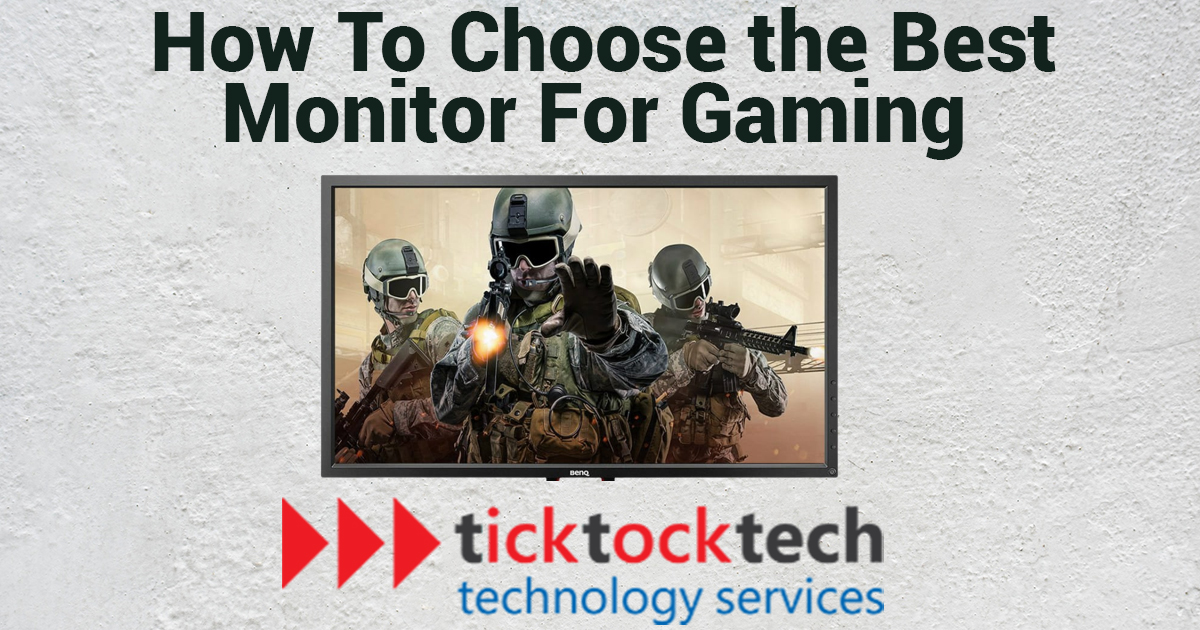Sometimes, enjoying gaming on the conventional laptop screen isn’t just 100%. One of the most important things when buying laptops for gaming is the RAM, ROM, CPU, and GPU but those are solely for the game performance. There’s more to these with the screen size being another huge factor in your gaming experience. Talking about the screen, you can have to any learned as there are combined standard and curve monitors with great view angels and High-definition displays. If you are to get a monitor(s) for either gaming, coding, or non-coding you shouldn’t just choose a screen randomly without checking out some specifications. What do you look at when choose a monitor for screen extension and gaming? The top 5 things to look at are Screen Resolution, Refresh Rate, Display Size and type, Brightness, and color.
Screen Resolution
The description of how clear the text and images displayed on your screen is referred to as screen resolution. The monitor could have a wide size but with a low resolution which won’t bring out a standard representation of most game graphics. Items appear sharper at larger resolutions, such as 1600 x 1200 pixels.
They also appear smaller, allowing for more items to be displayed on the screen. The greater the resolution supported by a display, the larger it is.
The number of pixels displayed per inch of a picture is usually expressed as pixels per inch (PPI). Higher resolutions mean more pixels per inch (PPI), which means more pixel information and a higher-quality, crisper image.
Screen resolution types Include High Definition (HD 1280 x 720) also known as 720p, Ultra HD (1920×1080) also known as 1080p, 2K Quad HD, and 4k Quad HD. Every good monitor or even smart TV will come with at least 1080p display resolutions.
Refresh Rate
The refresh rate of a display is also an essential factor as it signifies the number of “times per second” (expressed in hertz, or Hz) that the image is refreshed. This is in short, how many times per second the display can transit between pictures or draw a new image on the display screen.
For instance, a refreshing rate of 60Hz means 60 images will be ready for display within a second. A higher refresh rate lowers motion blur and makes the action feel smoother, as well as making pictures appear crisper, more responsive, and faster. When you watch a Blu-ray movie, you get a 1080p 60Hz picture. For gamers, the least you should go for is 60/120Hz for a great experience.
Monitor Display Size and Type
The most common monitor screen panel sizes suitable for gaming are 25 to 34 inches compared to Smart TVs which could be up to 55 inches. Normally, especially in TVs, you may need to measure the distance between where placement and where you will be sitting to determine the appropriate screen size for the best viewing experience. But for monitors, that isn’t needed as you are sitting right in front of your computer.
Monitors come in both squared shapes and curved shapes, if you want to combine monitors for a larger screen, then the curved shape might be most ideal. In addition to the size, another important thing to look at is the Bezel (monitor borders). For effective gaming, these borders have to be as small as possible, especially for curved monitors, or if you are looking to connect two or more monitors for interoperability.
For gaming and cinematic experience, the best to go for even though your closer (when playing games) will be at least 27-inch size. About screen types, LED ( Lighting Emitting Diode) OLED(organic LED), and QLED(Quantum dot LED), are the three most common types of screens, and most commercially available televisions use one of these panels. These qualify the TV in terms of brightness, backlighting, colors, power consumption, and flexibility.
Talking about the famous apple Retina display. Retina display is a term coined by Apple that just means that the pixel density on a screen is so high that the naked human eye cannot distinguish individual pixels at a normal viewing distance. It allows the screen to show more detail and improves the viewing experience.
Brightness
The brightness and color display of a monitor are two more crucial features to consider when you wantg to choose a monitor for gaming. The quality and amount of the reflected light that your monitor display emits are measured in nits as brightness. Even if the majority of gamers do play in dimly lit spaces, this is a crucial aspect for comfortable viewing.
Your room’s ambient lighting will determine the range of brightness you’ll require. It should also be taken into account as I’ll presume you won’t utilize the display solely in dimly lit areas. The brightness of your monitor is adjustable, so you may theoretically choose one with a maximum brightness of 500nits regardless of the sort of room you want to use it in.
Monitor Display Color
Red, green, and blue are the three fundamental colors that are produced by a monitor or TV screen. Different combinations and intensities of these three hues are what give rise to the many colors we see. Depending on the bit depth, which determines how many pixels may fit on the screen, the pixels are arranged in a pattern of primary colors. It refers to the number of different red, green, and blue output variants for displays, or bits per subpixel or bits per channel. There are several ways to accomplish this. 8-bit (16.7 million colors) and 10-bit are the most popular bit depths supported (1.07 billion colors). When playing games or using your PC, color temperature is a key factor in deciding visual quality. Although 6500K is the standard color temperature for gaming, you may change it depending on the game you are playing.

